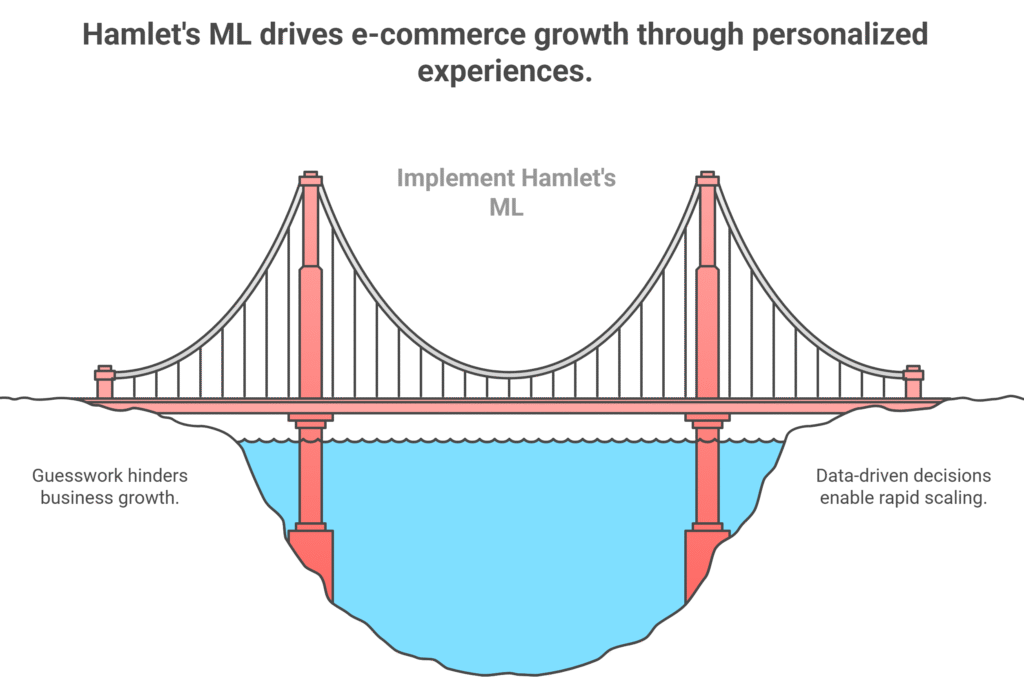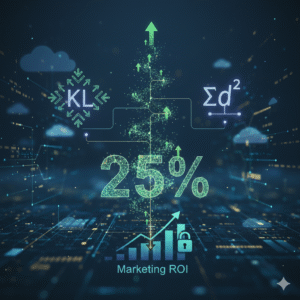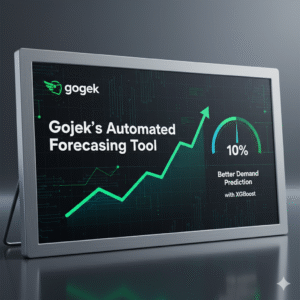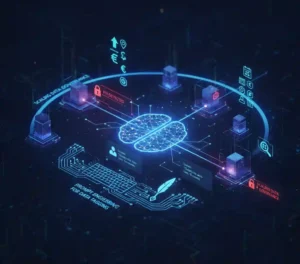Table Of Contents
- Introduction
- The Core of Hamlet: Real-Time Insights for Business Recognition
- Overcoming Key Challenges in Building Hamlet
- Model Training and Selection: Precision Meets Speed
- The Full Pipeline: From Order to Outreach
- Real-World Impact and Case Studies
- Trends Shaping B2B ML in E-Commerce
- FAQs
- Conclusion :Why Hamlet Matters for Your Business
Introduction
Imagine you’re browsing an online furniture store, adding office chairs and desks to your cart. You’re not shopping for your home—you’re outfitting a new startup workspace. But the site treats you like any other consumer. What if the platform could spot your business intent right away and offer tailored perks? That’s the magic behind Wayfair’s innovative approach to spotting business shoppers. In this deep dive, we’ll explore the Wayfair Hamlet B2B customer identification system, a game-changer in e-commerce that’s blending machine learning with smart outreach to boost conversions.
Wayfair, known for its vast home goods selection, isn’t just for casual buyers. Their Wayfair Professional program caters to businesses with perks like bulk pricing and dedicated support. Yet, many potential B2B customers slip through the cracks on the consumer site. Enter Hamlet: a suite of models that asks, “To B2B or not to B2B?” drawing from Shakespeare’s famous line. This Wayfair business shopper machine learning tool identifies hidden business buyers, generating leads that fuel growth.
As e-commerce evolves, identifying business versus consumer intent is crucial. According to a 2023 McKinsey report, B2B e-commerce is growing at 18% annually, outpacing B2C. But without tools like the Hamlet model Wayfair developed, companies miss out on this boom. Hamlet steps in with real-time B2B customer prediction, analyzing orders to flag business-like behavior. It’s not just tech—it’s a strategy that triples enrollment rates through timely engagement.
The Core of Hamlet: Real-Time Insights for Business Recognition
At its heart, Hamlet is about machine learning for business customer recognition. The model triggers post-order, estimating if a purchase is for business use. High-scoring customers get nudged toward Wayfair Professional, unlocking benefits like expanded catalogs and special pricing.
Consider a hotel manager ordering linens. Hamlet scans the order details, browsing history, and more to predict B2B intent. This Wayfair Professional eligibility model isn’t guessing—it’s powered by over 100 features, from real-time site activity to historical data. In an industry where 70% of B2B buyers start as anonymous browsers (per Gartner), such precision is vital.sellerscommerce.com
Hamlet’s design tackles diversity in business shopping. From designers grabbing decor to universities furnishing dorms, patterns vary. By classifying shopping behavior, Wayfair ensures personalized outreach for B2B e-commerce, turning one-time buys into loyal accounts.
Overcoming Key Challenges in Building Hamlet
Creating a robust real-time order confirmation ML model like Hamlet wasn’t straightforward. Wayfair’s team faced hurdles in labeling data and engineering for speed—challenges common in e-commerce ML.
First, the modeling challenge: incomplete ground truth. Not every shopper reveals their intent, so labeling “business” or “consumer” is tricky. Wayfair’s three-step approach shines here:
- Start with knowns: Positively label enrolled Wayfair Professional users; negatively label those who opted out of business marketing.
- Expand via matching: Use record linkage for B2B identification, linking addresses to public business data or third-party sources.
- Boost with synthetics: Train a neural network on unlabeled data, assigning labels based on probability thresholds.
This method echoes trends in ML, where synthetic data fills gaps. A 2024 MIT study found synthetic labeling boosts model accuracy by up to 25% in imbalanced datasets. For Hamlet, it created a rich training set, enabling the customer engagement prediction model to spot subtle signals.
On the engineering side, real-time demands clashed with feature needs. Sub-second responses are non-negotiable—data shows immediate outreach boosts enrollment threefold. Yet, features span streaming (like current order info) and historical (lifetime purchases).
Wayfair solved this with a hybrid setup:
- Streaming via Aerospike for fresh data.
- Pre-computed features in Vertex feature stores, updated every 12 hours.
This architecture ensures richness without slowdowns. In broader trends, Vertex AI is gaining traction; Google’s 2025 updates emphasize real-time ML, aligning with Hamlet’s use.
Model Training and Selection: Precision Meets Speed
Choosing the right framework was key for Hamlet’s shopping behavior classification Wayfair style. After evaluations, XGBoost won for its speed with 100+ features. Trained to maximize PR-AUC, it handles imbalance well—vital when B2B shoppers are rare.
Why PR-AUC? Accuracy flops in skewed data, but precision-recall captures trade-offs. For instance, phone outreach needs high precision to avoid wasting calls, while on-site messaging favors recall to catch more prospects.
Thresholds tailor outputs: High for costly actions, low for broad reach. This flexibility makes Hamlet a powerhouse in B2B lead generation with ML, outperforming rules-based systems by double, as Wayfair’s benchmarks show.
The Full Pipeline: From Order to Outreach
Hamlet’s end-to-end architecture ties it all together. An order triggers feature pulls—Aerospike for real-time, Vertex for batch. Engineered inputs feed the model, outputting a B2B probability.
Then, action: Scores drive outreach. High probabilities trigger calls or emails; mediums get messaging. This seamless flow exemplifies real-time feature engineering used in Hamlet OC, ensuring no opportunity slips away.
In practice, picture an office manager’s order. Hamlet flags it, prompting a pop-up: “Shopping for business? Join Wayfair Professional for exclusive deals.” Such tactics align with industry shifts—Forrester reports personalized post-purchase engagement lifts retention by 40%.aboutwayfair.com
- How to implement B2B customer identification for online retail: Start with data labeling, add real-time engineering, train on XGBoost, and integrate with sales.
- Steps to integrate real-time ML leads with sales outreach teams: Trigger models post-event, score outputs, automate handoffs via APIs for seamless follow-up.
- Best practices in building B2B ML models for e-commerce: Diversify features, use synthetics for labels, optimize PR-AUC, and iterate thresholds.
- Actionable strategies for growing Wayfair Professional via machine learning: Flag high-scorers immediately, personalize offers, and measure uplift against baselines.
- Optimizing business shopper conversion using automated classification: Combine ML predictions with multi-channel engagement for higher enrollment and retention.
Real-World Impact and Case Studies
Hamlet’s success stories abound. One contractor, initially browsing consumer pages, scored high on an order of tools. A timely email led to enrollment, saving 15% on future buys. Another: a chain restaurant furnishing outlets. Hamlet’s prediction enabled bulk order support, growing their account value tenfold.
These aren’t isolated. Wayfair notes Hamlet doubles lead quality over old methods. Broader stats back it: ML in e-commerce could add $1 trillion in value by 2030 (Bain & Company). For businesses, it means efficient scaling without guesswork.
Tips for your setup:
- Integrate diverse data sources for richer features.
- Test thresholds iteratively against business goals.
- Monitor for drift—e-commerce behaviors evolve.

Trends Shaping B2B ML in E-Commerce
The rise of models like Hamlet reflects bigger waves. Real-time customer classification in e-commerce is booming, with 60% of retailers adopting ML by 2025 (IDC). Challenges like incomplete data persist, but tools like synthetic labeling and feature stores are democratizing solutions.Getindata.com
Personalized outreach for B2B e-commerce is key—buyers expect relevance. Hamlet’s approach, blending ML with human touchpoints, sets a benchmark. As privacy regs tighten, first-party data focus (like Wayfair’s) will dominate.
- End-to-end architecture of the Hamlet order confirmation model: From order trigger to feature retrieval (Aerospike/Vertex), inference, and score-based outreach.
- Machine learning challenges for incomplete ground truth in e-commerce: Addressed via record linkage and neural network synthetics for expanded datasets.
- Customer outreach strategies triggered by B2B prediction models: Precision-focused for calls; recall-oriented for messaging, optimizing cost and reach.
- Performance metrics for B2B identification algorithms: PR-AUC prioritizes imbalance, ensuring versatility across applications.
- Importance of Vertex feature stores in real-time ML: Enables pre-computation for speed, supporting rich features without SLA breaches.
What is the Wayfair Hamlet model for B2B customer identification?
It’s a ML suite that predicts business shoppers on Wayfair’s consumer site, using post-order analysis to flag and engage potential B2B leads.
What are the challenges in building a B2B shopper classifier?
Key issues include incomplete labels (solved via synthetics) and real-time speed (handled with feature stores).
How does Wayfair’s Hamlet model distinguish business from consumer shoppers?
By scoring probabilities based on features like order volume and address matches, then applying thresholds.
How is real-time feature engineering used in Hamlet OC?
Streaming platforms like Aerospike handle live data, while Vertex pre-computes historicals for quick inference.
How does Wayfair engage high-probability B2B customers?
Via calls, emails, or on-site prompts, timed for maximum conversion.
Can e-commerce platforms accurately identify business shoppers using ML?
Yes, as Hamlet shows, with accuracies doubling traditional methods through advanced labeling.
Should B2B customers receive tailored outreach after purchase?
Absolutely—it triples enrollment, per Wayfair data, by capitalizing on post-buy momentum.
Are ML-based models outperforming traditional business rules for B2B detection?
Hamlet benchmarks show twice the effectiveness, thanks to nuanced feature analysis.
FAQs
Conclusion:
Why Hamlet Matters for Your Business
Hamlet’s story isn’t just Wayfair’s—it’s a blueprint for e-commerce evolution. By mastering Wayfair Hamlet B2B customer identification, companies can uncover hidden revenue streams. Whether you’re in retail or beyond, embracing ML for business recognition drives growth.
Ready to apply these ideas? Audit your data, experiment with features, and watch conversions soar. Share your thoughts below—what’s your biggest B2B challenge?
Visit : CareerSwami For More.


















